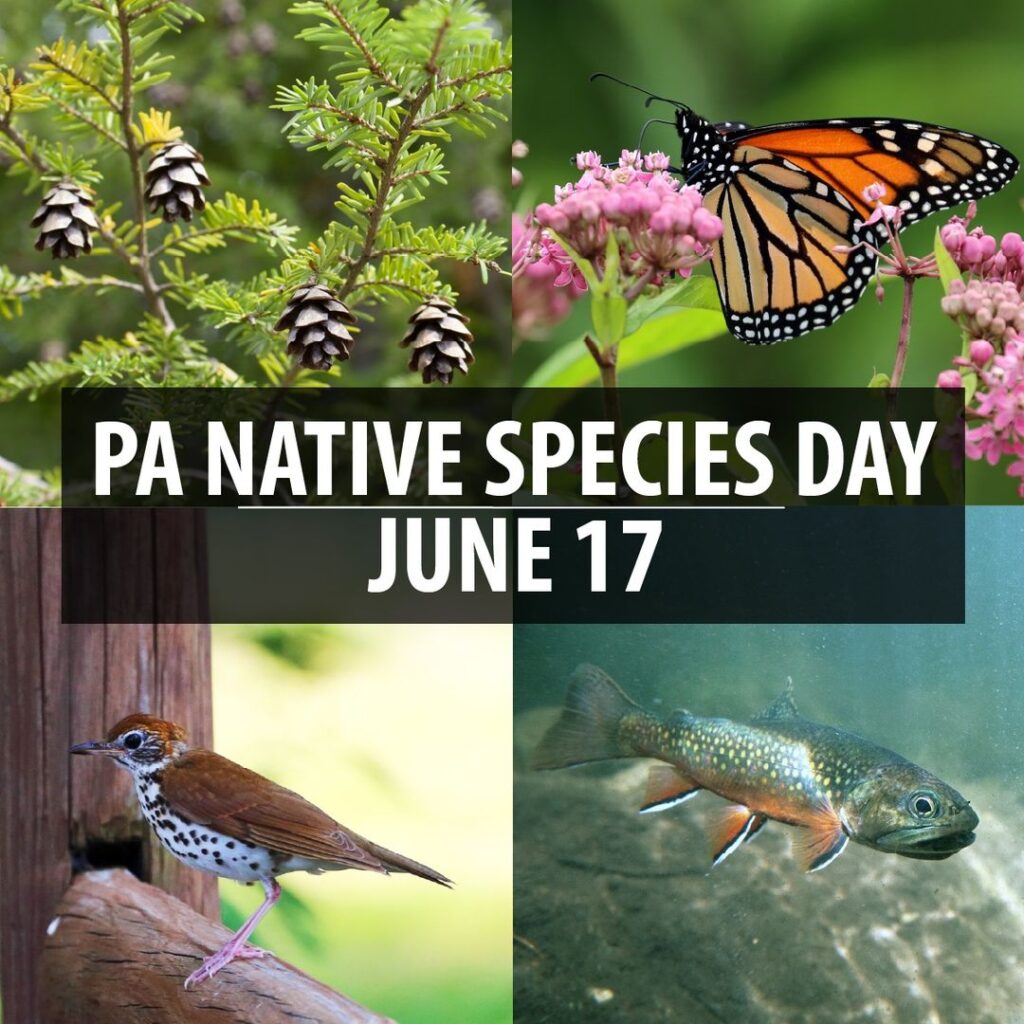By, Susan Sprout
The Governor’s Invasive Species Council is launching PA’s first Native Species Day this month. On the council’s Dept. of AG website, they provide their explanation of “native”. It refers to PA’s “diverse plants, trees, insects, fish, birds, and mammals that originated here thousands of years ago and thrive in MUTUAL dependence”. I capitalized “mutual” because it is important for us to understand that species depend on each other just like we depend on others in our lives. When our interaction, purposeful or accidental, gets rid of native species whose lives and lifestyles support many other natives, we risk disabling the whole system. The increased presence of imported, exotic or non-native, invasive plants and insects and animals and pathogens living and taking root in PA can out-compete the natives and threaten their survival. They are “recognized as one of the leading threats to biodiversity and impose enormous economic costs to agriculture, forestry, fisheries, and other enterprises, as well as to human health” (LandsScope America).

Invasive, non-native plants now make up 37% of PA’s wild plant population, currently over 285 species. And they are not just in our forests, either. Suburban areas made up of 92% lawns don’t help with the problem because they do not contribute to local food webs. “We treat plants and trees like ornaments in our yards, ignoring their environmental roles,” according to Doug Tallamy in his podcast “Native Plants Support Local Food Webs”. They just don’t provide the nutrition needed by by our native pollinators, for example. Without appropriate pollinators, many plants, including food products we require, will not set seed and reproduce. Our survival is threatened as well. “A diverse mix of native trees, shrubs, perennial flowers and warm-season grasses provide food sources for native pollinators” (#PA Native Species Day). We need to become stewards of our properties and contribute in a healthy manner to the environment around us.
If you are interested in learning about native plants for your yard, check out the PA DCNR tag Native Plants. The article entitled “Bring Life to Your Yard with Native Plants” gives excellent suggestions. A word of caution when purchasing plants: many of the available plants are cultivars or plant varieties that have been produced in cultivation by selective breeding and genetic engineering. They aren’t the native plants of the past. If you personally have trouble digesting and assimilating GMO products from the store, imagine what happens to native insects, bees,and butterflies that try to get nutrition from plants that are “foreign” to their tastes, digestion, and egg-laying protocols. They can’t just dine there anyway because they have evolved along with certain plants that they require and that have sustained their species for millennia.

